Imagine the frustration of constantly itching and scratching at your skin, unable to find relief. Now imagine that same experience for your beloved canine companion. Hot spots, a common and painful skin condition in dogs, can turn a happy pup into a miserable one. But fear not, dog owners! With proper knowledge, care, and prevention, you can help your furry friend avoid this itchy ordeal.
In this engaging and informative blog post, we’ll delve into the world of canine hot spots, discussing their causes, symptoms, treatment, and prevention. We’ll also touch on the dog breeds more prone to developing hot spots and how to address the underlying causes. So, let’s jump right in and help you become a hot spot-fighting superhero for your four-legged friend!
Understanding Canine Hot Spots
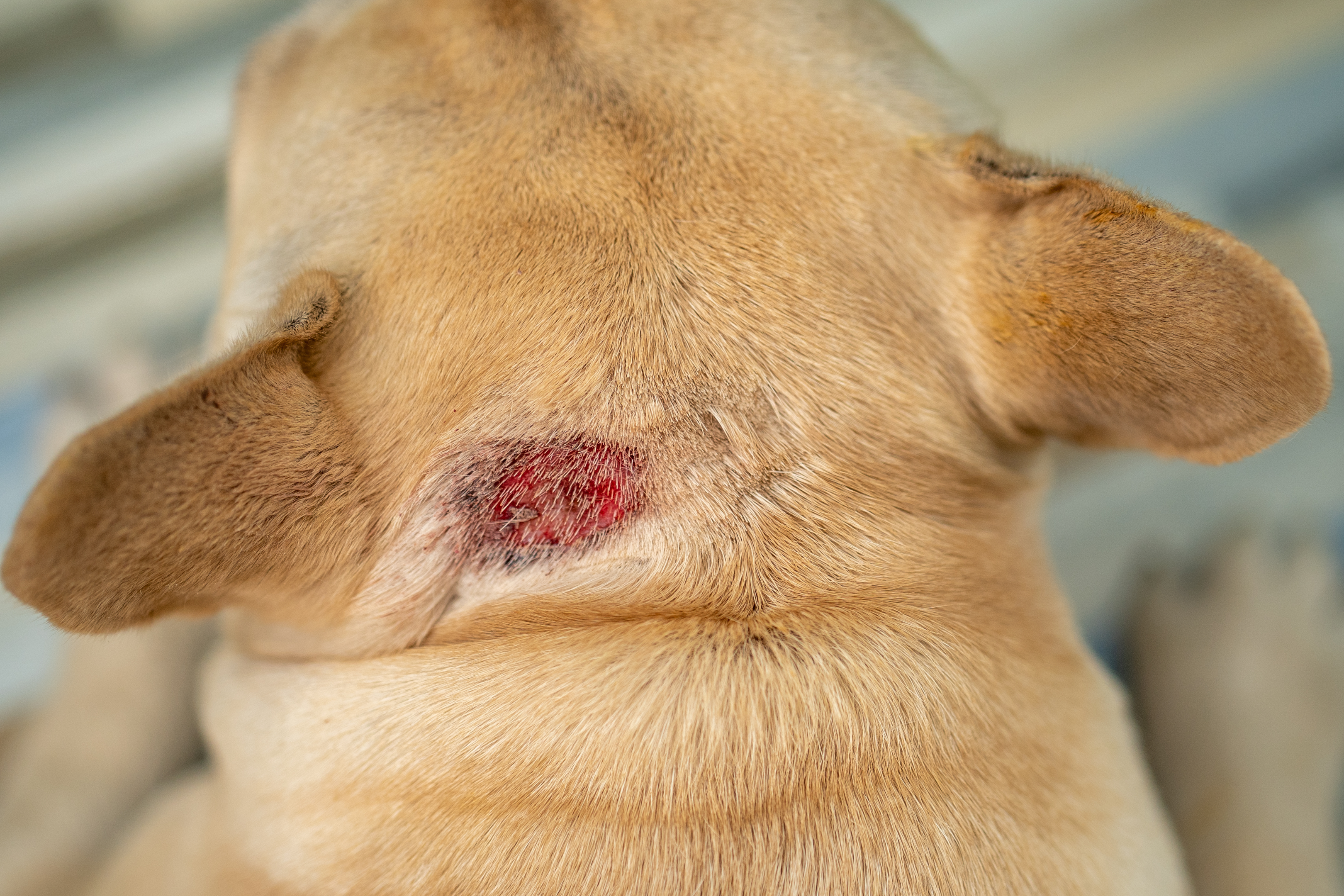
Hot spots on dogs, also known as acute moist dermatitis, are painful, inflamed skin lesions that can appear anywhere on a dog’s body but are commonly found on the head, legs, and hips. These irritated skin patches are not just a cosmetic issue; they can cause significant discomfort and distress for your pet. Moreover, hot spots and excessive licking can lead to severe skin infections and even systemic complications if left untreated.
Also known as pyotraumatic dermatitis, these red, inflamed skin lesions appear quickly, ooze, and may contain pus. Hot spots are often painful, itchy, and smelly sores that may be very obvious or can be hidden beneath matted fur. The most common sites for these lesions are the head, legs, and hips, although they can be found anywhere on a dog’s body.
Understanding the symptoms and appearance of hot spots is crucial for early detection and treatment. Here are key signs to look out for:
- Red, inflamed skin lesions
- Oozing or pus-filled sores
- Painful, itchy, and smelly areas
- Lesions hidden beneath matted fur
By recognising these signs, you can take prompt action to alleviate your dog’s discomfort and prevent further complications.
Understanding the underlying causes is crucial to effectively treating hot spots and preventing their recurrence. Common culprits include allergies and sensitivities, infections and parasites, excess moisture, poor hygiene, and inadequate grooming. In the following sections, we’ll explore these factors in more detail and provide helpful tips for managing and preventing canine hot spots.
Addressing Underlying Causes
- Impacted Anal Glands
- If the hot spot formed as a result of impacted anal glands, they will need to be expressed by a professional.
- Flea Allergy
- A monthly flea control protocol is essential for hot spots caused by flea allergies. Products that control the entire flea life cycle can be highly effective.
- Arthritis
- When arthritis is the culprit, your veterinarian may prescribe non-steroidal anti-inflammatory drugs (NSAIDs) or other pain medications to alleviate discomfort and inflammation.
- Inhalant or Food Allergies
- In cases of inhalant or food allergies, your veterinarian can help you start avoidance or desensitisation therapy and may recommend a hypoallergenic diet.
- Ear Infections
- Addressing ear infections involves treating the underlying yeast or bacteria causing the issue.
- Behavioural Issues
- Boredom or behavioural issues may lead your dog to traumatize itself. Training, behaviour modification, additional exercise, enrichment activities, and possibly medications like antidepressants could be the solution.
- Poor Grooming
- If poor grooming is the cause, seek the assistance of a professional groomer who can properly handle your dog’s grooming needs.
By understanding and addressing these specific issues, you can more effectively manage and prevent hot spots in your dog.
Hot Spot: Acute Moist Dermatitis
Acute moist dermatitis, or hot spots, is a skin condition characterised by red, inflamed, and infected skin, often hidden beneath dirty or matted fur. The rapid development of sores under the haircoat is common in thick-coated or long-haired dogs, caused by skin inflammation and bacterial skin infections.
Hot spots, also known as overly infected hot spots, typically present as damp, red, itchy, and tender areas accompanied by a scab on the infected skin surface. Hot spots can lead a dog to excessively lick, bite, or scratch the area, further exacerbating the problem. The key to treating acute moist dermatitis is addressing the inflammation and bacterial infection while preventing excess moisture and self-trauma from excessive licking.
Regular grooming, hygiene, and proper management of underlying causes of dog itching can go a long way in preventing troublesome or recurrent skin problems.
Common Locations for Hot Spots
While hot spots can occur anywhere on a dog’s body, they are more frequently seen in certain areas, such as the head, neck, limbs, and hips. This distribution is often associated with the regions a dog can easily reach to scratch, lick, or chew when they’re experiencing discomfort. Essentially, these behaviours are a dog’s natural response to irritation, serving as a form of self-soothing. However, this can exacerbate the problem, causing the hot spot to worsen.
Identifying the precise location of a hot spot can help in understanding the underlying cause. For instance, hot spots near the ear can indicate ear infections, while hot spots on the limbs may suggest allergies or joint issues. By pinpointing the location and addressing the root cause, you can take a more targeted approach to treating hot spots and preventing further infection.
Identifying Hot Spots in Dogs
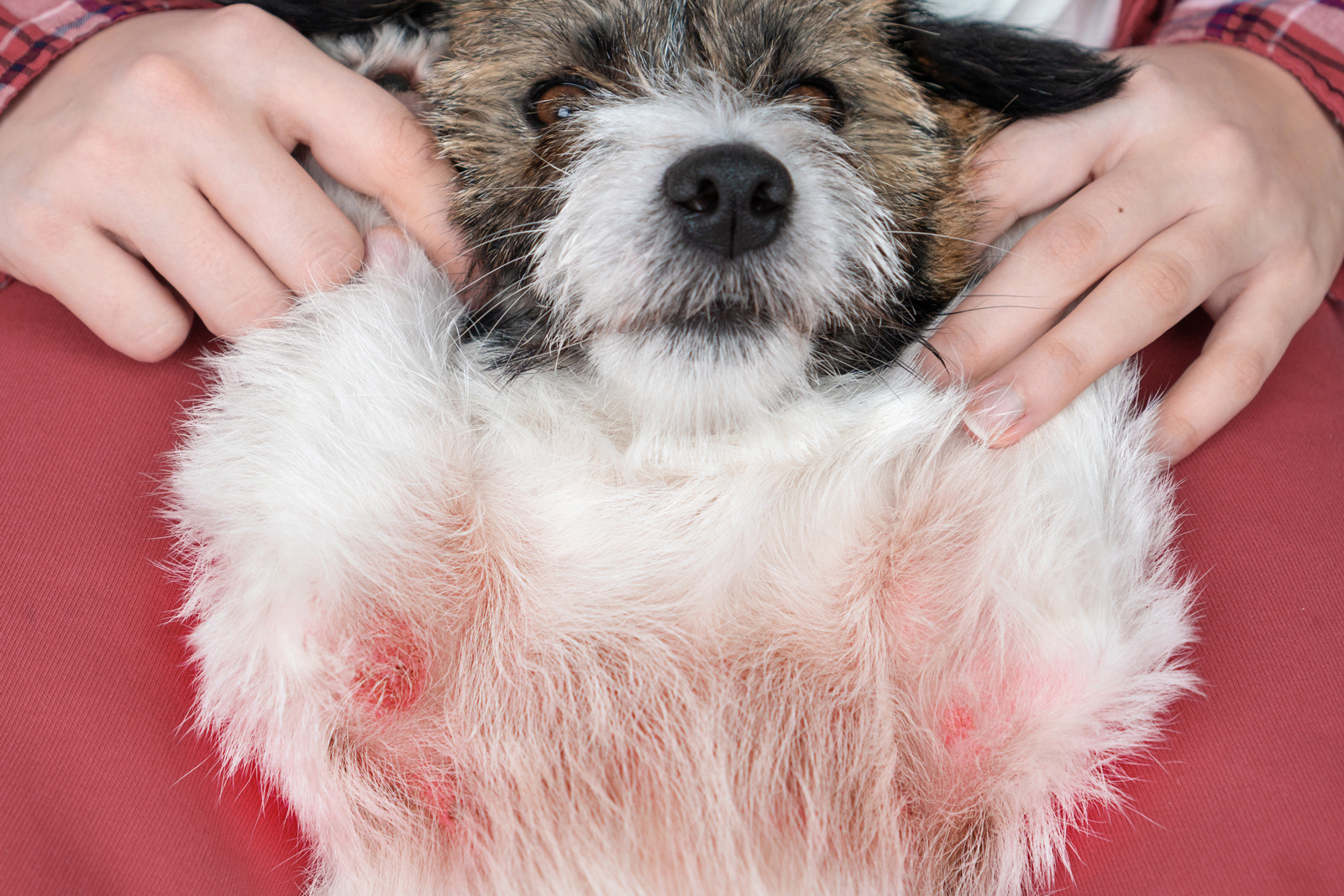
Recognising the signs of hot spots in dogs is essential for early intervention and effective treatment. Hot spots are identified by redness, inflammation, hair loss, and skin damage, often accompanied by oozing and bleeding. As the hot spot worsens, the affected area may become more painful and infected, necessitating veterinary intervention.
It’s important to be vigilant and monitor your dog’s skin for any signs of hot spots. If you notice any suspicious areas, consult your veterinarian immediately to determine the appropriate course of action. Early identification and treatment can significantly improve your dog’s comfort and well-being and minimise the risk of complications.
Redness and Inflammation
Redness and inflammation are the first signs of a hot spot, indicating irritation and possible infection. These symptoms can manifest as skin redness, itching, hair loss, small or large red bumps, scabs, and skin irritation. Failure to address these early signs and underlying causes can lead to more severe issues, such as widespread infection and skin ulcerations.
Monitoring your dog’s skin for any signs of redness and inflammation is crucial. If you suspect your dog may have a hot spot, consult your veterinarian for a thorough examination and appropriate treatment. Timely intervention can help prevent the hot spot from worsening and causing skin infection and further discomfort to your pet.
Hair Loss and Skin Damage
Hair loss and skin damage may be observed as dog hot spots progress, potentially leading to infection and skin ulcerations. The continuous licking and chewing at the irritated area can exacerbate the condition, causing further damage to the skin and increasing the risk of secondary infections.
If you notice hair loss and skin damage in your dog, it’s essential to seek veterinary attention sooner. Your veterinarian can recommend the appropriate treatment to address the hot spot and any underlying causes, helping your dog return to its happy, healthy self.
Causes of Hot Spots in Dogs
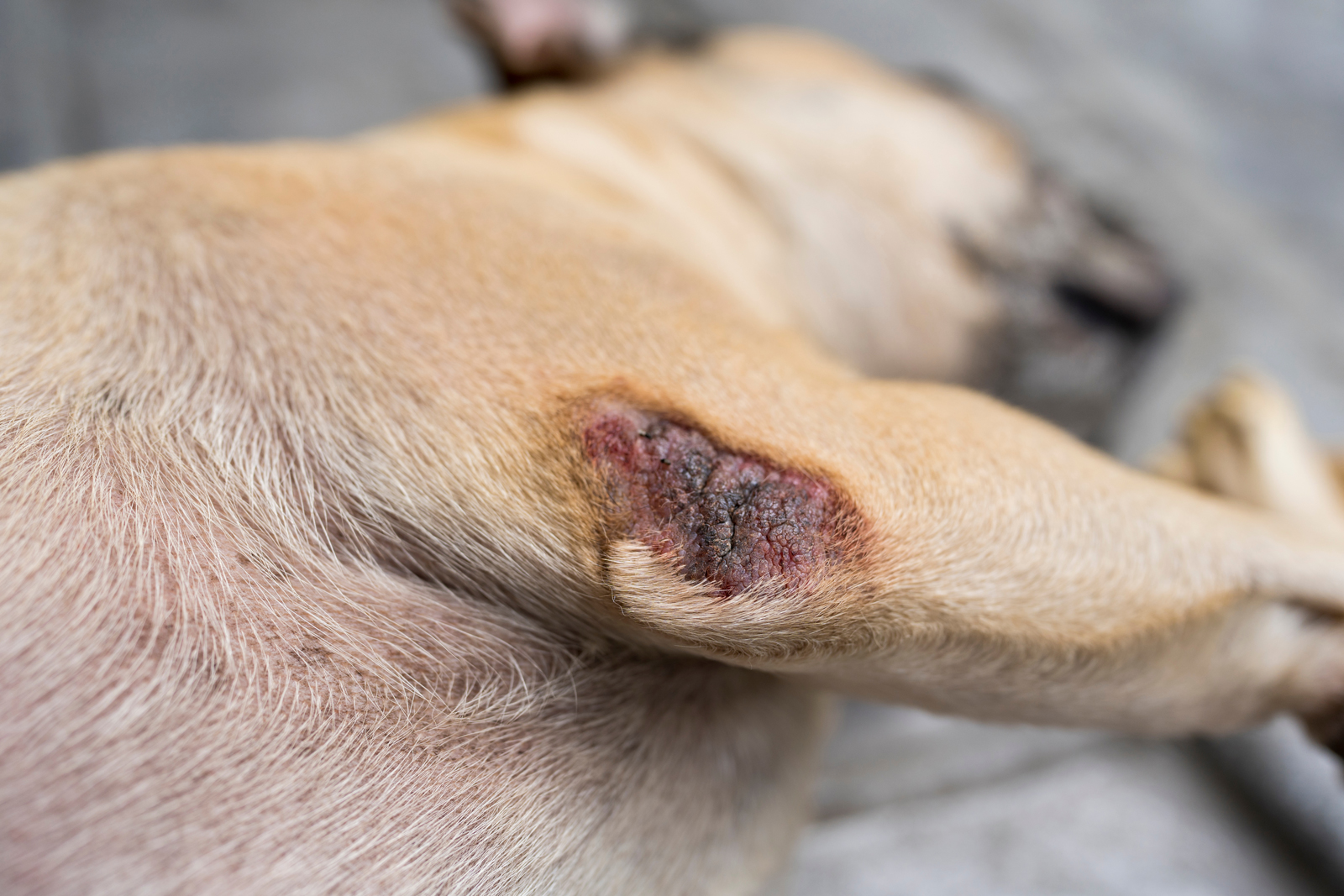
Understanding the root causes of hot spots in dogs is crucial for effective treatment and prevention. Hot spots may be attributed to a bacterial overgrowth caused by allergies, infections, parasites, excess moisture, and inadequate grooming, among other potential causes. By addressing the underlying cause, you can treat the current hot spot and minimize the risk of future occurrences.
Hot spots are usually caused by self-trauma when a dog scratches an itch so vigorously that it creates an open wound. Here are some common causes:
- Allergies: These include food allergies or inhalant allergies that cause itching.
- Reactions to insect bites: Fleas, mites (Sarcoptes, Cheyletiella), or other small insects (e.g., caterpillars, bees, wasps, lice, gnats, or mosquitoes) can trigger intense itching.
- Ear infections: Bacteria or yeast in the ear canal can irritate the dog so much that they scratch their ear, creating hot spots on the ear flap, behind the ear, or on the neck.
- Pyoderma: Primary skin infections caused by bacteria or yeast can lead the dog to scratch an area excessively, resulting in secondary hot spots.
- Poor grooming: Unkempt hair coats can cause dogs to bite at tangles, creating open wounds. Matted fur prevents air from reaching the skin and retains moisture after a dog swims or gets wet, setting up an ideal environment for hot spots.
- Boredom: Dogs, like people, can develop bad habits. Instead of biting their fingernails, bored dogs may lick areas that are easily accessible, often leading to hot spots on the feet and forearms.
- Orthopaedic problems: Dogs with arthritis or back problems tend to lie down frequently, causing abrasions over pressure points like hips or hocks. Licking these abrasions can lead to hot spots. Additionally, dogs may lick or chew at degenerating joints, much like people rub a sore knee, creating hot spots in the process.
- Anal gland inflammation: Infected or impacted anal glands are painful and annoying, causing dogs to lick the area around the rectum and potentially creating hot spots under or on top of the tail.
By thoroughly understanding and identifying these causes, you can take proactive steps to prevent hot spots and ensure your dog’s comfort and well-being.
In the following sections, we’ll explore the common causes of dog hot spots and provide recommendations for addressing these triggers. Remember that each dog is unique, and the specific cause of hot spots may vary. Consult your veterinarian for a tailored approach to your dog’s skin condition.
Allergies and Sensitivities
Dogs can be allergic to many substances, such as certain types of food, environmental allergens like pollen or mould, insect bites or flea saliva. When the immune system reacts abnormally to certain substances, it can cause your dog to scratch or lick their skin excessively, which can cause hot spots.
To mitigate food allergies and environmental sensitivities in your dog, consider avoiding exposure to potential allergens, providing a nutritionally balanced diet, and consistently grooming your dog.
Infections and Parasites
Infections and parasites, such as ear infections or flea infestations, can cause hot spots by prompting excessive scratching and licking. These conditions can lead to skin irritation and inflammation, creating the perfect environment for developing hot spots.
To prevent hot spots caused by infections and parasites, ensure proper hygiene and grooming for your dog. Regularly check for signs of infection or infestation and consult your veterinarian if you suspect a problem. Deworming your dog regularly and using natural, non-toxic flea control products can help keep infections and parasites at bay.
Excess Moisture and Poor Grooming
Excessive moisture and poor grooming can create an environment for bacterial growth, leading to hot spots. Activities like swimming or inadequate drying after a bath can contribute to unwanted moisture, while matted fur can trap moisture and debris against the skin, further exacerbating the problem.
To prevent hot spots caused by excessive moisture and poor grooming, ensure that your dog is thoroughly dried after swimming or bathing to prevent excess moisture. Regular brushing and grooming can help prevent matting and keep your dog’s skin and coat healthy.
Excessive Licking, Chewing, or Scratching
This can be caused by stress, boredom, or behavioural issues, leading to the development of hot spots. Similarly, skin irritation from certain types of grasses or plants can also prompt excessive scratching or licking that results in a hot spot.
Treating and Managing Dogs Hot Spots
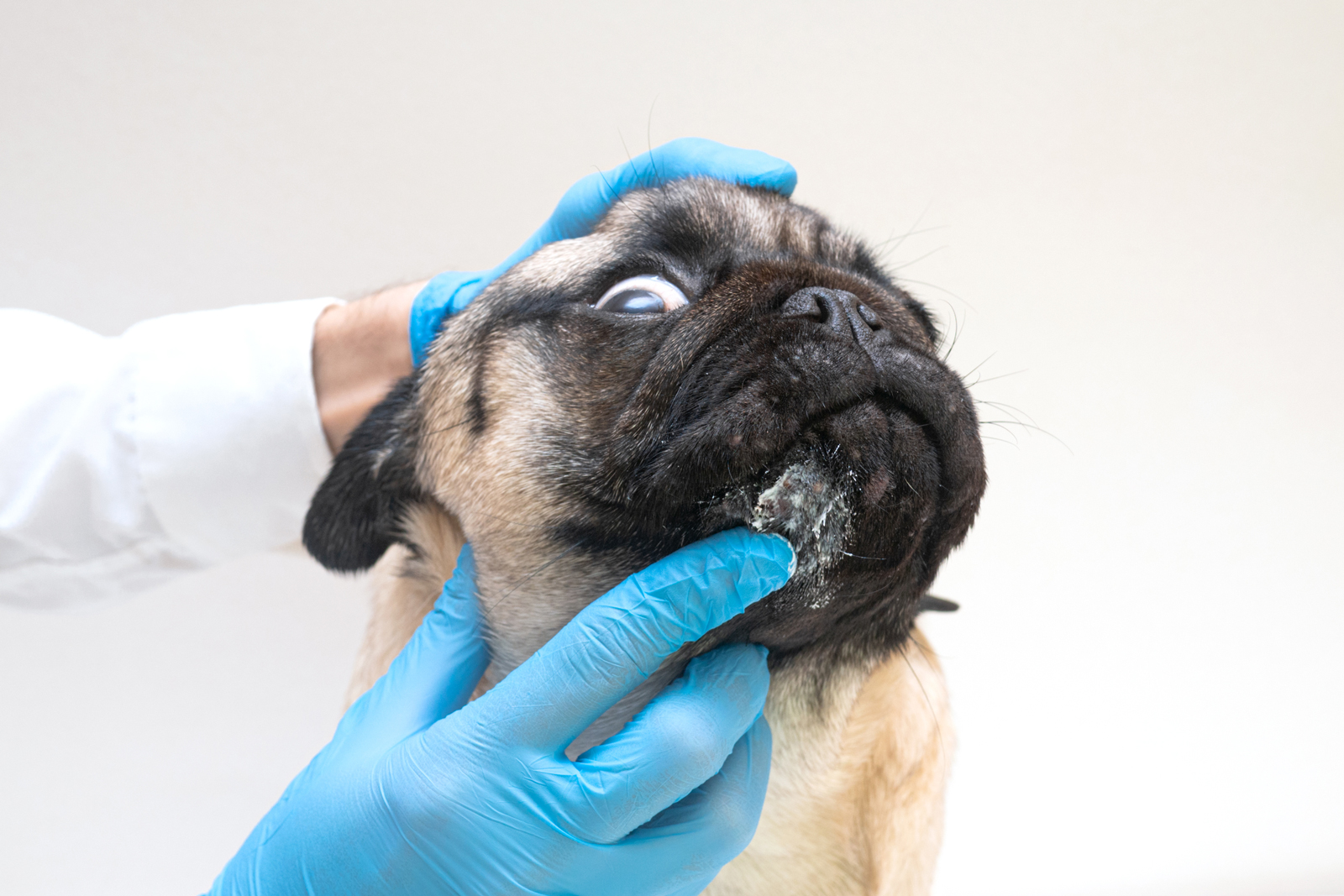
Treating and managing hot spots on dogs is a multifaceted task encompassing professional veterinary advice and natural home care remedies. The severity of the hot spot and the underlying cause will dictate the appropriate course of action. While medications such as antibiotics or anti-itch treatments may be needed, natural remedies can often play a significant role in alleviating the condition.
A key element to managing hot spots is home care and preventative measures. A balanced diet rich in protein, essential amino acids, and Omega-3 acids can improve skin health and resilience. Regular grooming is essential to keep the skin clean and free from irritants that could cause itching and scratching. Ensuring your dog is free from fleas and ticks, well-exercised, mentally stimulated, and dry after baths or swimming can also contribute significantly to preventing hot spots.
To stop the trauma and prevent deep skin infections, immediate action is necessary. Some effective options include:
- Elizabethan Collar (E-collar or Cone): Prevents the dog from chewing at the hot spot.
- Covering the Hot Spot: Using a sock or bandage as a barrier.
- Medications: Topical or oral steroids and antihistamines can reduce itching. Always consult your veterinarian before using any medications intended for humans, as they can be toxic to dogs.
Often, a combination of these methods is required to stop the trauma. However, addressing the underlying cause of the hot spot is equally important:
- Impacted Anal Glands: Need to be expressed.
- Flea Allergy: Implement a monthly flea control protocol to manage the entire flea life cycle.
- Arthritis: Your veterinarian may prescribe non-steroidal anti-inflammatory drugs (NSAIDs) or other pain medications.
- Inhalant/Food Allergies: Work with your veterinarian to begin avoidance or desensitization therapy and consider a hypoallergenic diet.
- Ear Infections: Treat the underlying yeast or bacteria.
- Behavioural Issues: Training, behaviour modification, additional exercise, enrichment, and possibly antidepressants may be necessary.
- Poor Grooming: Seek a professional groomer to ensure proper care.
Clipping the hair away from the hot spot and the surrounding area is crucial. If the hair is removed, the hot spot will heal more quickly, allowing the lesion to dry properly. This process may be painful so that sedation might be required. After clipping, disinfect the lesion with a chlorhexidine solution to kill bacteria. Topical antibiotics, desiccating sprays, and soothing agents are more effective on a clean, clipped skin surface. For serious hot spots, oral antibiotics and steroids/antihistamines may be necessary.
Below, we will delve deeper into the various approaches for treating and managing hot spots, focusing on natural remedies and preventative home care. However, it is important to remember that each dog is unique, and while these methods can be helpful, consulting with your veterinarian to address your pet’s specific needs is paramount.
Veterinary Intervention
Veterinary intervention is necessary for severe or infected hot spots, with treatments including antibiotics, anti-itch medications, and addressing underlying causes. Your veterinarian will assess your dog’s condition and recommend the most appropriate treatment plan based on the severity of the hot spot and the underlying cause.
By seeking veterinary intervention for your dog’s hot spot, you can ensure that the condition is effectively treated and minimize the risk of complications. In addition, your veterinarian can help you identify and address the underlying cause, preventing future hot spots and improving your dog’s overall quality of life.
Home Care for Hot Spots
Home care for treating hot spots involves trimming the affected area with dog hair clippers, cleaning with a gentle antiseptic, applying recommended ointments, and preventing your dog from further irritating the area by licking or scratching. It’s essential to monitor the hot spot closely to ensure proper healing.
When treating your dogs’ hot spots topically at home, avoid using harsh chemicals or astringents that can worsen the condition. Instead, you may opt for natural remedies like aloe vera gel, black tea bags, or honey, known for their soothing and antibacterial properties. With proper care and attention, your dog’s hot spot can heal, allowing your pet to return to its happy, healthy self.
Preventing Hot Spots in Dogs
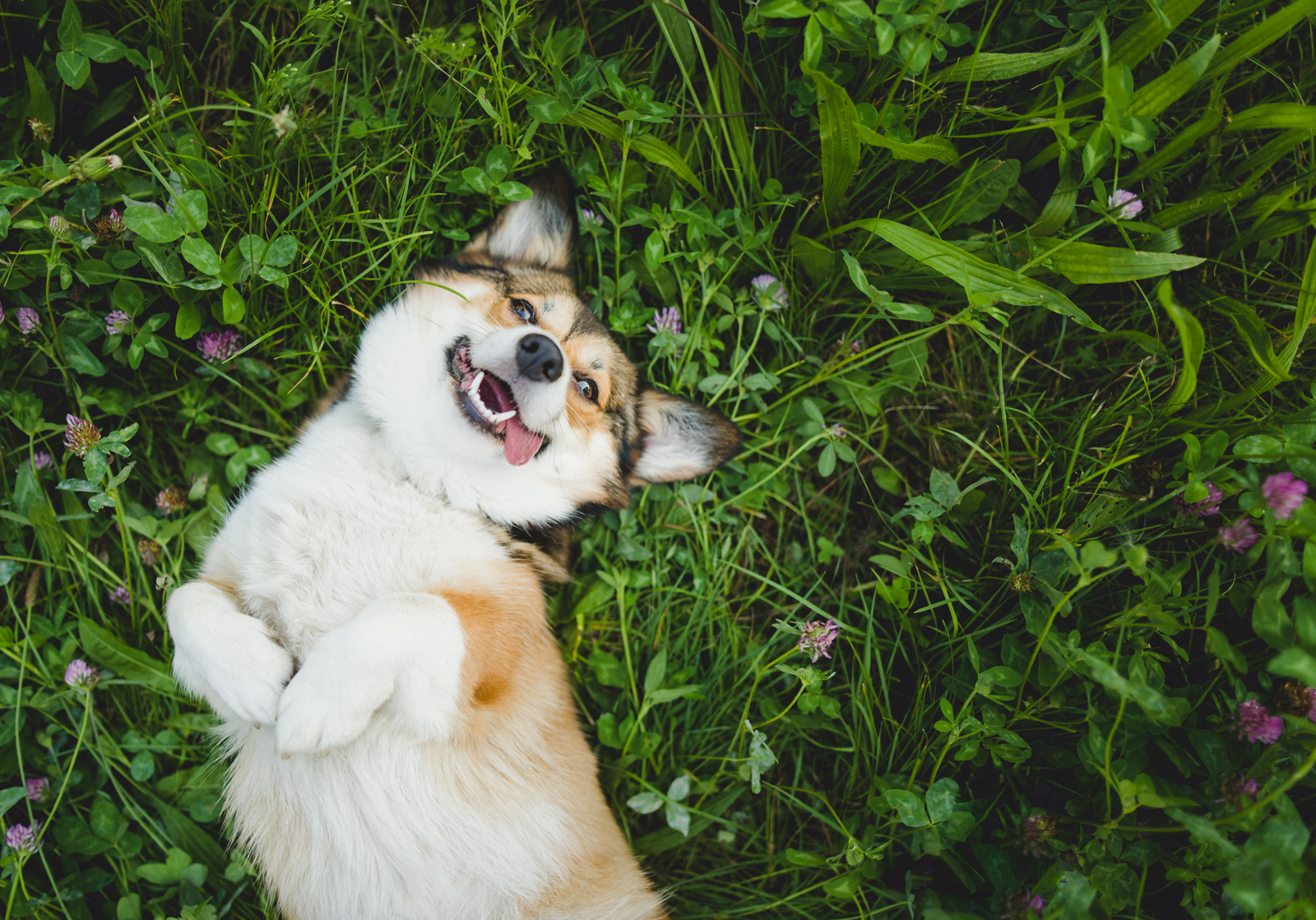
The prevention of hot spots in dogs entails a combination of regular grooming, maintaining good hygiene, and promptly dealing with potential triggers such as allergies, infections, and parasites. Being proactive about your dog’s health and well-being can significantly reduce the chance of hot spots, ensuring that your pet stays comfortable and itch-free.
In the following sections, we’ll discuss specific strategies for preventing hot spots in dogs, including regular grooming and hygiene practices and addressing underlying causes. Remember that prevention is key, and by keeping a close eye on your dog’s skin and coat, you can catch potential issues early and avoid the discomfort of hot spots.
Natural remedies like Omega-3 fish oil and Collagen supplements for pets, as well as mental stimulation and physical exercise, can contribute to your dog’s overall skin health and well-being.
Here are some general natural methods for preventing hot spots:
- Maintain a Fresh Food Det: A fresh diet is our top recommendation for addressing various health issues, including recurring hotspots. The underlying factor is gut health. Ultra-processed, carbohydrate-rich dry foods don’t support optimal gut well-being. Transitioning to a balanced, fresh food regimen, be it raw or gently cooked according to our nutritionist-approved recipes, is an excellent initial step toward promoting better gut health.
- Increase Omega 3s! Omega-3 fatty acids are anti-inflammatory. Many of the meat-based diets we provide our canines, especially those from farmed sources, are rich in omega-6 fatty acids. However, omega-6 can promote inflammation. Increasing your pet’s omega-3 intake is crucial to counteract inflammation and maintain a balanced diet. Failing to manage inflammation can lead to various health issues, with hotspots being a prime example. These hotspots are clear indicators of inflammation. Therefore, it’s essential to incorporate omega-3s into your dog’s diet. Notably, Linoleic Acid (LA) stands out among omega-3s. It works to moisturise, seal, and protect the skin. This, in turn, creates a healthy microbiome for bacteria, viruses, and fungi to flourish on the skin.
- Regular Grooming and Hygiene: Regular brushing can help remove debris and loose hair, reducing the chances of hot spots. It can also help you spot any potential skin issues early on. If your dog has long hair or a double coat, consider getting it trimmed, particularly in hot weather, to prevent matting and overheating. With proper grooming and hygiene, you can help your dog maintain a healthy skin barrier and healthy skin and coat, minimising the risk of hot spots.
- Improve Gut Health: Gut health is vital to maintaining a strong immune system, as 70-80% of your pet’s immunity originates there. Keeping the gut in tip-top condition keeps the immune system strong – and as we all know, a strong immune system leads to fewer health issues as the body is naturally able to fight pathogens. Combining prebiotics with top-tier soil-based probiotics is a great combination to rejuvenate and heal the gut from any damage, especially if it has been negatively impacted by excessive chemical treatments, common household products, or after receiving antibiotics and vaccinations. Consider exploring FloraMax, our comprehensive solution, for optimal gut care.
- Flea and Tick Control: Fleas and ticks can cause skin irritation that might lead to hot spots. Regular, preventative natural treatments can help keep these pests at bay.
- Provide Physical and Mental Stimulation: A hot spot can sometimes be caused by a dog licking or chewing excessively at their skin out of boredom or stress. Regular exercise and mental stimulation can help alleviate these issues.
- Keep Hotspots Dry: Moisture on the skin from wet fur can create a prime environment for hot spots to form. Try to towel-dry your dog thoroughly after baths or swims, paying particular attention to areas that stay wet for longer, like the underbelly.
- Consider Natural Supplements: Certain supplements, like those containing Omega-3 and Collagen, can contribute to healthier skin. While the connection between these and hot spot prevention isn’t definitive, healthier skin is generally more resilient.
Addressing Underlying Causes
Addressing underlying causes, such as allergies or infections, can help prevent hot spots from developing or recurring. By identifying and treating the root cause, you can minimise the risk of hot spots and ensure your dog remains comfortable and itch-free.
Consult your veterinarian to pinpoint the specific cause of your dog’s hot spots and discuss potential interventions for common triggers, such as natural allergy supplements and non-toxic flea control products. Addressing the underlying causes of hot spots, you can help your dog maintain healthy skin and prevent future occurrences.
Dog Breeds Prone to Hot Spots
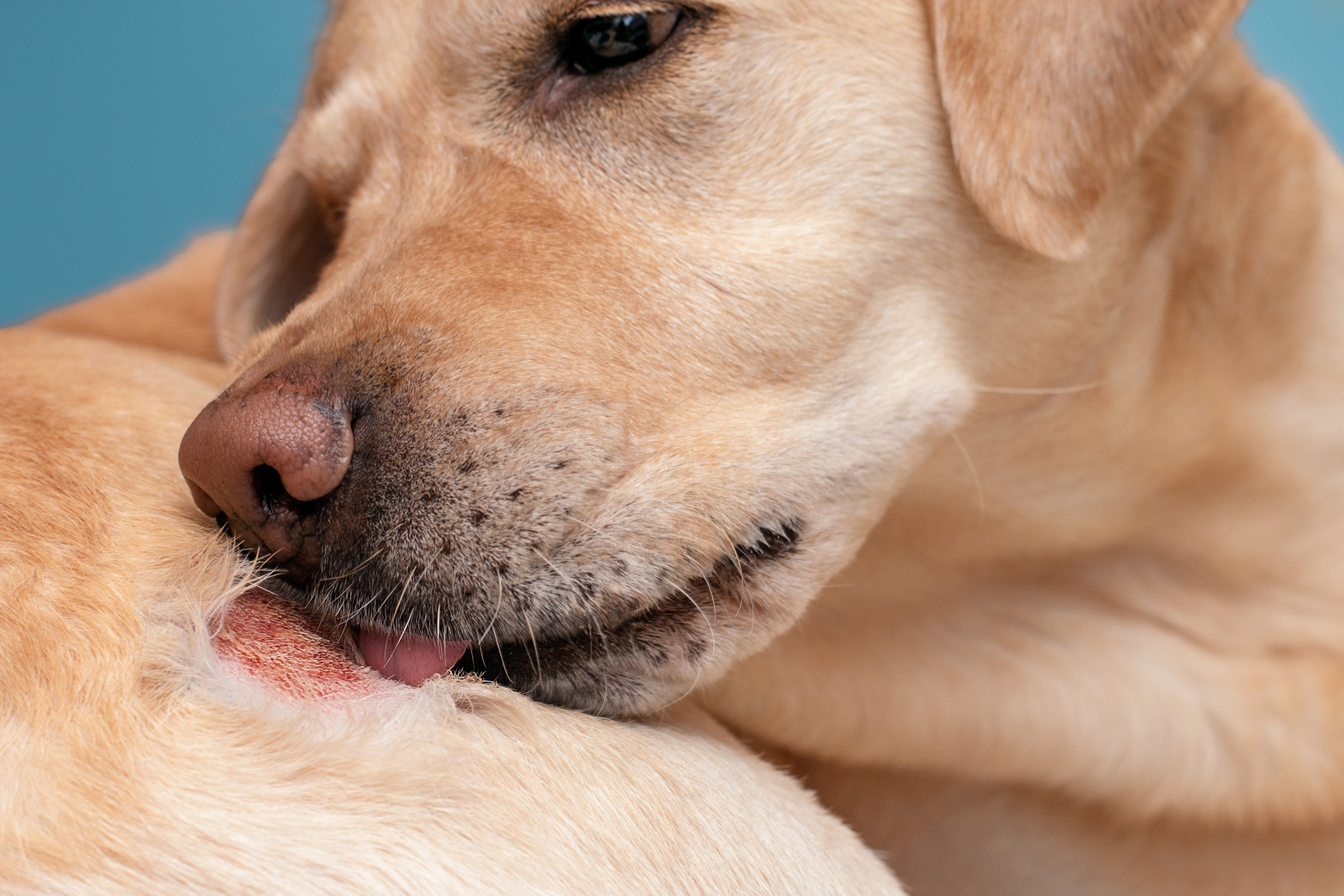
Certain dog breeds, such as German Shepherds, Golden Retrievers, Labradors, Rottweilers, and Saint Bernards, are more prone to developing hot spots due to factors like thicker coats and a higher risk of allergies. While any dog can develop hot spots, these breeds may require extra attention and care to prevent this painful skin condition.
If your dog belongs to one of these commonly affected breeds, be sure to monitor their skin and coat closely for any signs of irritation or hot spots.
With proper care and attention, you can help your dog avoid the discomfort of dog hot spots and prevent them from recurring.
Summary
This detailed guide provides an in-depth exploration of hot spots in dogs, including their causes, symptoms, treatment, and prevention. You can help your dog maintain healthy skin and avoid this painful condition by thoroughly understanding hot spots and the factors contributing to their development.
Remember, prevention is key. By staying vigilant and proactive in monitoring your dog’s skin and coat, addressing underlying causes, and maintaining proper grooming and hygiene, you can minimise the risk of hot spots and ensure your furry friend remains comfortable, happy, and itch-free.
Prevent your furry companion from suffering the misery of hot spots by taking proactive steps today! Ensure your dog’s well-being with regular grooming, proper hygiene, and natural supplements. Consider incorporating NutriFlex Everyday Maintenance Collagen and NutriFlex OmegaMax Fish Oil Softgels into their diet to support healthy skin and coats.
Frequently Asked Questions
How are hotspots caused?
Several factors can lead to the development of hot spots in dogs, including allergies, parasites, skin infections, poor grooming, underlying medical conditions, stress and boredom.
How do you get rid of hot spots?
To get rid of hot spots, groom the area and clean it with an antiseptic solution, apply a hydrocortisone ointment, and stop your dog from licking the spot until it heals. Additionally, identify and remove any underlying causes.
What are dog hot spots caused by?
Hot spots are caused by allergies, fleas, or other parasites; skin or ear infections; long or double coats; high humidity; and self-trauma from vigorous scratching due to allergies, food allergies, or inhalant allergies.
These hot spots can be very uncomfortable for your dog and can lead to infection if not treated properly. It is important to identify the cause of the hot spot and take steps to prevent it from recurring.
What are the common symptoms of hot spots in dogs?
Hot spots in dogs typically manifest as redness, inflammation, hair loss, skin damage, discharge pus, and bleeding.
How can I prevent hot spots in my dog?
Maintain regular grooming and hygiene, address underlying causes such as allergies or infections, and monitor your dog’s skin and coat for signs of irritation or infection to prevent recurring hot spots.
Hot spots can be painful and uncomfortable for your dog, leading to further skin and coat problems if not addressed. Taking proactive steps to prevent hot spots is the best way to keep your dog healthy and comfortable.